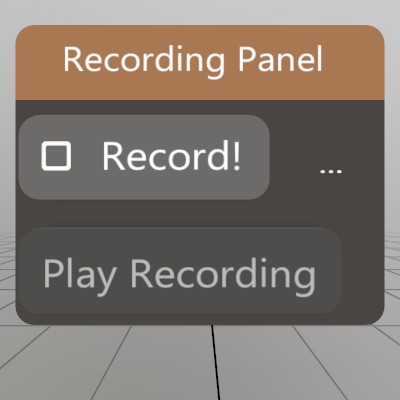Sound.ReadSamples
int ReadSamples(Single[]& samples)
This will read samples from the sound stream, starting from the first unread sample. Check UnreadSamples for how many samples are available to read.
| Single[]& samples | A pre-allocated buffer to read the samples into! This function will stop reading when this buffer is full, or when the sound runs out of unread samples. |
| RETURNS: int | Returns the number of samples that were read from the stream’s buffer and written to the provided sample buffer. |
int ReadSamples(IntPtr sampleBuffer, int sampleCount)
This will read samples from the sound stream, starting from the first unread sample. Check UnreadSamples for how many samples are available to read.
| IntPtr sampleBuffer | A pointer to a pre-allocated native buffer of floats to read the samples into! This function will stop reading when this buffer is full, or when the sound runs out of unread samples. |
| int sampleCount | The maximum number of samples to read, this should be less than or equal to the number of samples the sampleBuffer can contain. |
| RETURNS: int | Returns the number of samples that were read from the stream’s buffer and written to the provided sample buffer. |
Examples
Getting streaming sound intensity
This example shows how to read data from a Sound stream such as the microphone! In this case, we’re just finding the average ‘intensity’ of the audio, and returning it as a value approximately between 0 and 1. Microphone.Start() should be called before this example :)
float[] micBuffer = new float[0];
float micIntensity = 0;
float GetMicIntensity()
{
if (!Microphone.IsRecording) return 0;
// Ensure our buffer of samples is large enough to contain all the
// data the mic has ready for us this frame
if (Microphone.Sound.UnreadSamples > micBuffer.Length)
micBuffer = new float[Microphone.Sound.UnreadSamples];
// Read data from the microphone stream into our buffer, and track
// how much was actually read. Since the mic data collection runs in
// a separate thread, this will often be a little inconsistent. Some
// frames will have nothing ready, and others may have a lot!
int samples = Microphone.Sound.ReadSamples(ref micBuffer);
// This is a cumulative moving average over the last 1000 samples! We
// Abs() the samples since audio waveforms are half negative.
for (int i = 0; i < samples; i++)
micIntensity = (micIntensity*999.0f + Math.Abs(micBuffer[i]))/1000.0f;
return micIntensity;
}
Recording Audio Snippets
A common use case for the microphone would be to record a snippet of audio! This demo is a window that will read data from the Microphone, and use that to create a sound for playback.

Sound recordedSound = null;
List<float> recordedData = new List<float>();
float[] sampleBuffer = null;
bool recording = false;
Pose recordingWindow = (Demo.contentPose * Matrix.T(-0.15f,0,0)).Pose;
void RecordAudio()
{
UI.WindowBegin("Recording Panel", ref recordingWindow);
// This code will begin a new recording, or finish an existing
// recording!
if (UI.Toggle("Record!", ref recording))
{
if (recording)
{
// Clear out our data, and start up the mic!
recordedData.Clear();
recording = Microphone.Start();
if (!recording)
Log.Warn("Recording failed to start!");
}
else
{
// Stop the mic, and pour our recorded samples into a new Sound
Microphone.Stop();
recordedSound = Sound.FromSamples(recordedData.ToArray());
}
}
// If the mic is recording, every frame we'll want to grab all the data
// from the Microphone's audio stream, and store it until we can make
// a complete sound from it.
if (Microphone.IsRecording)
{
if (sampleBuffer == null || sampleBuffer.Length < Microphone.Sound.UnreadSamples)
sampleBuffer = new float[Microphone.Sound.UnreadSamples];
int read = Microphone.Sound.ReadSamples(ref sampleBuffer);
recordedData.AddRange(sampleBuffer[0..read]);
}
// Let the user know the current status of our recording code.
UI.SameLine();
if (Microphone.IsRecording) UI.Label("recording...");
else if (recordedSound != null) UI.Label($"{recordedSound.Duration:0.#}s");
else UI.Label("...");
// If we have a recording, give the user a button that'll play it back!
UI.PushEnabled(recordedSound != null);
if (UI.Button("Play Recording"))
recordedSound.Play(recordingWindow.position);
UI.PopEnabled();
UI.WindowEnd();
}
Found an issue with these docs, or have some additional questions? Create an Issue on Github!
